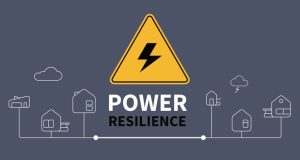THE AIR WE BREATHE
Indoor air quality (IAQ) affects us all but is often underestimated as a wellbeing factor. Although public awareness of air quality in general, and the effects of outdoor pollutants in particular, is arguably at an all-time high, there is still a severe lack of understanding and discussion around the dangers of poor IAQ.
The quality of the air we breathe indoors can have a significant effect on comfort, wellbeing and ability to concentrate. It is well documented that poor ventilation and subsequently poor IAQ can lead to headaches, poor vision, depression and respiratory issues.
We need to implement measures which can help to deliver the things we cannot buy – health, wellbeing, comfort and happiness. The average person spends more than 90 per cent of their life in buildings – in homes or the office. The effect of this on our wellbeing may be invisible, but it is profound. Design and specifications can affect everything from mental health to allergies and respiratory diseases.
The number of people with asthma is growing(5), with 5.4 million people in the UK now affected. That’s one person in 11, or one in every five households. In environments where we spend our time, factors such as flooring materials, ventilation and radiator settings are hugely important. Effective design, aimed at improving ventilation, reducing overheating and creating a healthy environment, will all play their part in reducing the risk.
For facilities managers, optimising the internal design of buildings through the specification of carefully chosen systems in heating, lighting and ventilation will be crucial as we continue to prioritise occupant wellbeing.
The WELL Building Standard is the premier standard for buildings, interior spaces and communities that aim to implement, validate and measure features that support and advance human health and wellness. Meeting the rigorous standards of the WELL Building Standard has proved a challenge which has prompted its founders the International WELL Building Institute (IWBI) to introduce WELL v2 – a more flexible and highest impact version of WELL, combining feedback from users with the most current health data and research.
The idea behind WELL v2 is to empower project teams to pursue the interventions that matter most to their project and their community without sacrificing WELL’s comprehensive and evidence-based approach and commitment to performance verification.
According to IWBI Chief Product Officer Rachel Gutter, “WELL v2 is our effort to consolidate the latest knowledge, leading research, new technology and advanced building practice to extend the benefits of WELL buildings to more people in more places.”
This means it aims to offer more choice to participants, and is flexible enough to evolve to meet the needs of any type of building in any part of the world. In order to make WELL v2 a better fit for people and spaces around the world, the standard now takes into consideration regional health concerns, cultural norms and market realities. It will also be regularly and proactively adapted to varying contexts and constructs, making it more relevant and readily applicable to spaces and places across the globe.
WELL v2 is also designed to be dynamic; working as a system that can continuously learn, evolve and improve. Moving away from a fixed scorecard of the earlier version gives users the opportunity to focus on the outcomes that matter most for their project and their community, and it allows the standard to regularly introduce new pathways and parts to make WELL a better and better fit for all buildings everywhere.
The development of WELL v2 is founded on the following principles:
- Equitable: Provides the greatest benefit to the greatest number of people, inclusive of all demographic and economic groups and with special consideration of groups of the least advantage or vulnerable populations.
- Global: Proposes interventions that are feasible, achievable and relevant across many applications throughout the world.
- Evidence-based: Undergirded by strong, validated research yielding conclusions that can reasonably be expected to receive acceptance by the scientific community.
- Technically robust: Draws upon industry best practices and proven strategies, offering consistency in findings across the relevant field or discipline.
- Customer-focused: Defines program requirements through a dynamic process, with multiple opportunities for stakeholder engagement, and by tapping the expertise of established leaders in science, medicine, business, design and operations.
- Resilient: Responds to advances in scientific knowledge and technology, continuously adapting and integrating new findings in the field.
For more information visit https://v2.wellcertified.com





